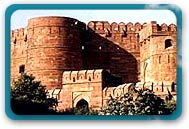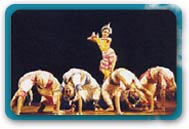|
 |
|
|
|
|
|
|
|
|
|
|
|
|
|
|
|
|
|
| Know Delhi |
|
|
| About Delhi |
|
|
 |
|
| Travel Destinations Guide |
|
|
| Adventure Tours India |
|
|
|
|
 |
Biking Tours |
 |
Paragliding |
 |
Skiing |
 |
Safari Tours |
 |
Water Rafting |
 |
Trekking Tours |
 |
Camel Safari |
|
|
| |
|
|
|
|
| |
|
|
|
| Delhi - The capital of India |
|
| Back |
 History of Delhi History of Delhi
 The history of Delhi is as interesting and as grand as the city itself. It was not since its inception that Delhi got the status of a capital city. However, because of its strategic location, it always counted amongst the major and important cities. It is believed that the city was first formed around 1450 BC, at the site of the Old Fort, as the royal fortress of Indraprastha, the capital of Pandavas. Thereafter was formed, the city of Lal Kot or Quila Rai Pithora in the year 1060 AD, by Rajput Tomaras. Sited at the Qutub Minar-Mehrauli complex, it was further expanded by Rajput king Prithviraj Chauhan. The history of Delhi is as interesting and as grand as the city itself. It was not since its inception that Delhi got the status of a capital city. However, because of its strategic location, it always counted amongst the major and important cities. It is believed that the city was first formed around 1450 BC, at the site of the Old Fort, as the royal fortress of Indraprastha, the capital of Pandavas. Thereafter was formed, the city of Lal Kot or Quila Rai Pithora in the year 1060 AD, by Rajput Tomaras. Sited at the Qutub Minar-Mehrauli complex, it was further expanded by Rajput king Prithviraj Chauhan.
The history of Delhi takes us further to the city of Siri built in 1304 AD, by Alauddin Khilji near Hauz Khas and Gulmohar Park. In 1320s, Ghiyas-ud-din Tughlaq built the city of Tughlaqabad near Qutab Minar complex. The rulers of Tughlaq dynasty kept on building their empire in Delhi by further founding Jahanpanah and Ferozabad, in the 14th century. After Tughlaqs, came Humayun who constructed Dilli Sher Shahi (Shergarh), around the Old Fort area, in 1530s. The history of Delhi continued with the city of Shahjahanabad that was built by Mughal Emperor Shah Jahan in the mid 17th century, still known as the Old Delhi.
The city was also the focal point for the first war of independence in 1857. New Delhi history and origin dates back to the 1920s, after it was decided to shift the seat of power from Calcutta to Delhi in Delhi Durbar of 1911. The entire area of Connaught Place and Rajpath came into existence then only. Each and every era of Delhi has left reminders of their existence. From the 3 gates of Quila Rai Pithora to the ruins of Tughlaqabad to the Old fort of Shahjahanabad, we are reminded of the history of Delhi through the various remains and monuments that stand proudly on its soil.
 PEOPLE AND LIFESTYLE PEOPLE AND LIFESTYLE
 Very few city residents can claim to being 'real' Delhi-wallahs, and most of the population of New Delhi comprises originally from Haryana, Rajasthan, Uttar Pradesh Bihar and Punjab. Due to rapid economic expansion and increased job opportunities people from neighborhood states comes to Delhi. But they have not forget their life-styles and languages. This diversity makes Delhi so lively and colorful. Punjab Delhi is a cosmopolitan city where people are open to embracing new ideas and life style. You can notice the transition in the demography of people in Delhi with the changing lifestyle and the influence of modern ideas in the lives of Delhites. Very few city residents can claim to being 'real' Delhi-wallahs, and most of the population of New Delhi comprises originally from Haryana, Rajasthan, Uttar Pradesh Bihar and Punjab. Due to rapid economic expansion and increased job opportunities people from neighborhood states comes to Delhi. But they have not forget their life-styles and languages. This diversity makes Delhi so lively and colorful. Punjab Delhi is a cosmopolitan city where people are open to embracing new ideas and life style. You can notice the transition in the demography of people in Delhi with the changing lifestyle and the influence of modern ideas in the lives of Delhites.
People from all parts of the country live in Delhi which makes the city very cosmopolitan in mature and there is unity among the citizens from all caste and creed. This "Unity in Diversity" can be seen in social and cultural gatherings where people from all communities can be seen on one platform sharing one common view. Be it Holi, Diwali, Id, Guru Purab or Buddha Purnima; you will find the same vigor and bliss among people from different communities. Delhiites are pampering modern lifestyle with frolic gaiety but they still remain traditional and love their culture.
 Languages in Delhi Languages in Delhi
Hindi is the official language of Delhi. As the city is dominated by the Hindu population, the majority of the people speak in Hindi. However the language is split up into several interesting dialects, which are popular among the people.
Urdu in Delhi is not only common but has a rich history of its own. Currently it is very popular in the area of Purani Dilli or Old Delhi, where a large number of Muslims reside.
Punjabi is one of the important languages of Delhi, which is widely spoken. The people who are conversant with it are the Punjabis and Sikhs in Delhi.
English in Delhi, is a language with which nearly all the inhabitants of the city are familiar. It is a popular means of communication, particularly among the youngsters. Tourists in the city have absolutely no problem in communicating with the local people as everyone from shopkeepers to travel guides and from taxi drivers to passers-by speak English very well.
Some of the other languages spoken in Delhi are Marathi, Sindhi, Gujarati, Nepali, Tamil, Oriya, Malayalam, Konkani and more.
Among the various languages in Delhi, Hindi and English are generally used as the common mediums of instruction.
 Climate Climate
New Delhi, the capital of India, has a hot and humid climate for most of the season. The city climate becomes very hot during the month of June which is followed by monsoon happening somewhere after September. Monsoon in Delhi is quite unpredictable where you can't predict which way they will turn. Delhi monsoon has never been like the one we witness in other parts of India, say for example Mumbai. Winter in Delhi is very chilly which peaks in at the start of November and continues till the month of February. The foggy and chilly weather during winters makes Delhi's climate a tough one to confront with. Delhi is situated on the banks of river Yamuna with Himalayas being in the north of Delhi. This is the main reason behind Delhi's climate being called as the "Continental Climate".
Summer Season : The average temperature of New Delhi during summer ranges from 25º C to 46º C. This goes to show that Delhi summer is very cumbersome and bearing the heat is no child's play. May and June are considered to be the hottest months of the year. Summer in Delhi stays till October before tinge of winter starts to sets in. Summer in Delhi attributes its cause to Rajasthan hot waves called "Loo". These heat waves are immensely hot and one needs to take proper precaution during the season. The arrival of monsoon does bring some relief to Delhi, which comes no earlier than the end of June. Monsoon in Delhi does bring some respite to Delhities but this has still not been much predictable and has been rare at times.
Winter Season : In comparison to summer, winters are short. Winter Season starts from the end of November and continues till February-March. The cold waves from the Himalayan region makes the winters in New Delhi very chilly. Temperatures fall substantially down to as low as 3 to 4º C at the peak of winter. Winters in Delhi get really chilly with bonfires all round the streets of Delhi to beat the cold waves. Delhi is not aloof to the problems of fog and smog. In January, a dense fog envelopes the city, reducing visibility on the streets. It is advisable to take enough precautions while driving during night and morning because fog reduces the visibility to a great extent. Usually though, winter days are pleasant with bright sunlight in afternoons only.
Monsoon (Rainy Season) : The city does not witness much of rainy season. The monsoon lasts from July to September. October sees the end of the monsoon but it is reasonably pleasant. |
| Back |
|
|
|
|
|
|
|
|
|
|
|
|
|
|
